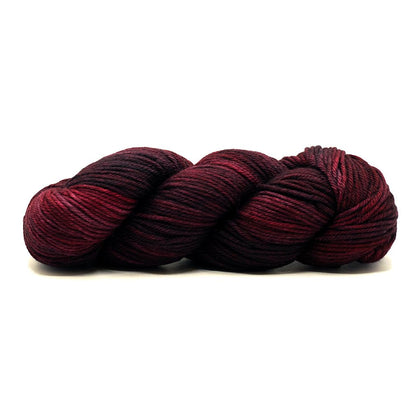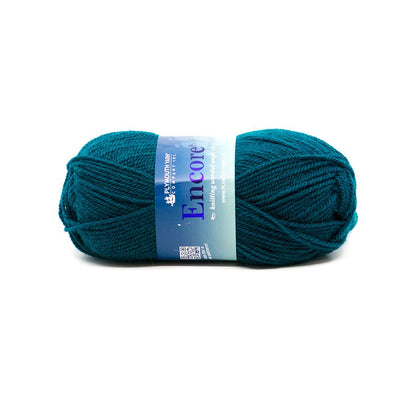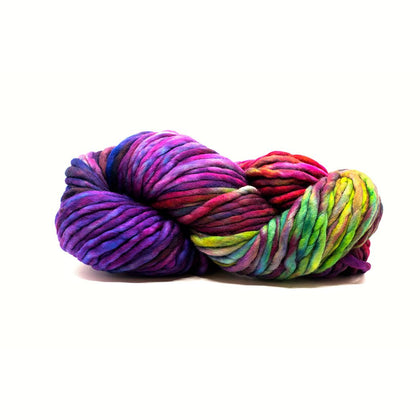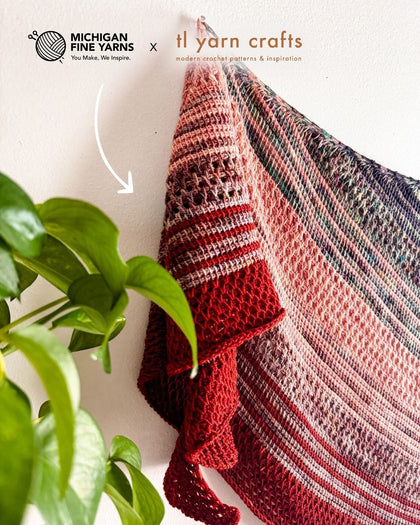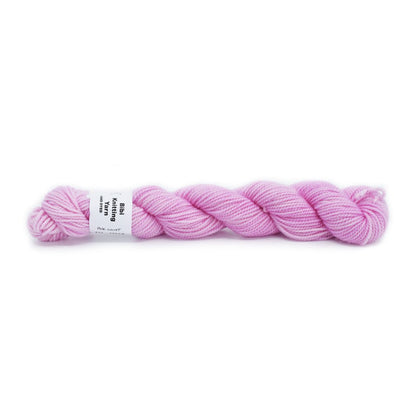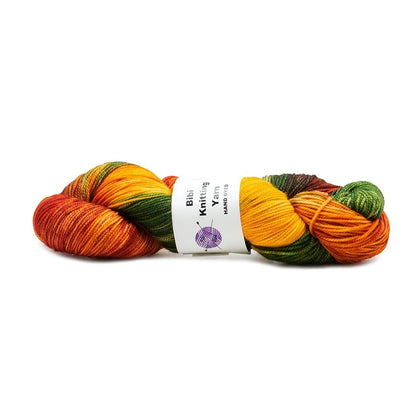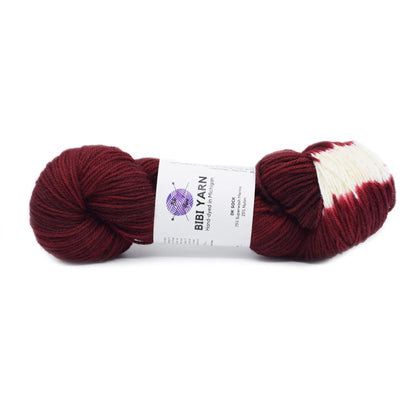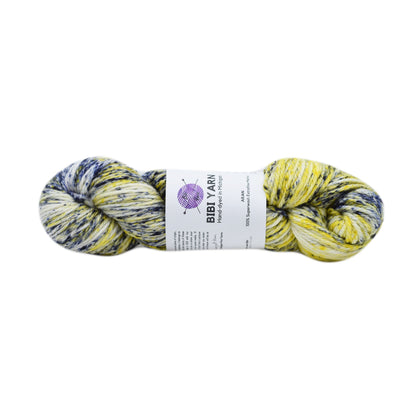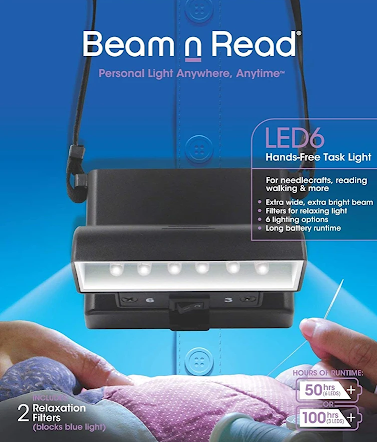Ergonomics of Knitting: 5 Tips for Comfortable Crafting

Earlier this week, we considered how our crafting can benefit our physical health. Today, we want to look at some of the common aches and pains we crafters experience, and how some simple ergonomic improvements can reduce our risk and keep us crafting! At the end of the article, we’ve also shared a few exercises to stretch and strengthen our core crafting muscles.
Knitting (we are using knitting as an example for this piece, but the material is just as important and applicable for all fiber arts and other crafts!) is a repetitive activity by nature. This can strain tendons and muscles, and compress nerves - sending pain signals to the brain. Generally speaking, there are five problem areas for knitters. Here are some common pain points for each area and why they happen:
Common Pain Points for Knitters
-
Back: Most of us knit primarily from a seated position, and typically for an extended period of time (30 minutes or more). Unless we are very cognizant of our posture, slouching and other awkward spinal positions put pressure on disks in our back which can pinch nerves and lead to pain.
-
Neck: Knitters often hold their necks in odd positions. Examples would be leaning forward or twisting to the side to read a pattern or bending in close to review stitches. As we tilt our head down or to the side, the tunnel that our nerves travel through is pinched closed and - as is the recurring theme - with repeated movements or prolonged static holds, we can develop literal pains in the neck!
-
Shoulders: We may be aware of when we are holding tension in our shoulders, but may not realize that they are also impacted by our posture. Our shoulders round in to bring our hands into a knitting position. This is very similar to when using a computer keyboard as both actions are done narrower than shoulder width. This stretches the space between the shoulder blades which works against the muscles contracting to lift and move our arms while working. Many of us are also guilty of carrying overly full project bags with single shoulder straps. This can put acute pressure on the shoulder and limit the rotator cuff’s space to function.
-
Elbow: The resting or neutral position for our elbow is straight, as if your hands are hanging at your sides. The further we bend our elbows and create acute angles - as we often do while knitting - the more pressure is put on the nerves that connect to our hands through this joint. Resting our elbows on chair arms or a table top increases this pressure. The tendons in the elbow can also become inflamed and painful. For knitters, using outstretched fingers for tensioning yarn can result in what is commonly referred to as “tennis elbow.” The opposite of this is “golfer’s elbow” which is inflammation caused by the curling of the fingers - when gripping needles tightly especially when working on heavy projects, for instance.
-
Wrist/Hands: Most of us are familiar with or have heard of the carpal tunnel which exists at the joint between our hands and wrists. When our hands are up and wrists down, this stresses the joint and can strain the tendons running through the tunnel. Resting our wrists on the table while using a computer mouse or working complicated stitches are typical examples. Inflammation of the tendons in the thumb can be another issue and may be the result of a prolonged static hold. In our case, this would usually be from forcefully gripping needles. If you don’t employ this type of grip, think of holding a book open one-handed for an extended period of time.
One of the overarching problems that knitters face is many of the situations described above are positions or motions that are common in other everyday life activities such as driving or working at a computer. Since the effects of these movements are cumulative, the impact is magnified over time by knitting and completing these other tasks. So, how do we reduce these concerns without giving up our craft time?
Our health and needs are all unique, but below are some suggestions to consider for improving the ergonomics of your crafting.
5 Tips to Improve the Ergonomics of Your Crafting
-
Create a conducive environment. Many of the issues knitters faced can be addressed by reviewing the physical environment we work in. Having a seat that promotes good posture and positioning our patterns in an elevated manner so we can see them without constantly craning our necks are two easy, but important factors. Adjusting noise and temperature to comfortable levels that won’t distract you or cause any tensing of muscles may seem small, but can make a big difference. Ensuring there is plenty of light that is positioned so that it illuminates our work without being directly in our line of vision will keep us from straining our eyes and necks to see our stitches. Try adding extra light to your space with the Beam n Read Personal light! Let the light do the work and be sure to stretch your neck during your sessions!
Beam n Read LED Portable Reading Light
-
Diversify. Mix things up! Working on similar projects with similar yarns and needles will use the same muscles and strain the same nerves and tendons. Varying the difficulty of the projects we’re working on, the size and weights of projects, even the colors we’re using will wear on our bodies differently, minimizing the likelihood of repetitive strain injuries. If we can mix in English and Continental methods of knitting, this is yet another way to keep our bodies fresh while continuing to enjoy our craft! As a bonus, all these ideas will keep us from becoming bored with our knitting!
- Consider your tools. Yes, there are needles and other tools that are specifically designed and labeled as “ergonomic.” They may indeed improve your grip or reduce strain, but you can do some things with the tools you have as well. For example, try to pair your needles with your yarns so that there is less friction when you’re stitching. This will reduce the energy required to create your fabric. Also, think about the type of project and the type of needles you’re using. If there will be a lot of fabric creating weight on the yarn, opt for a circular needle - even if you’re working flat - so the stitches rest on the cable and your hands don’t have to bear as much weight. Don’t have circular needles? An interchangeable needle set gives you options for a wide variety of projects!
The Collection's 5" Interchangeable Lace Needle Kindness Set by Knitter's Pride
-
Take breaks! Every 20-30 minutes (at least!) take a few moments to get up, walk around, stretch, get a drink of water and simply move! Getting the blood flowing throughout our bodies is important, and we’ll also be giving the muscles that have been working to knit, a few moments of down time to rest up for another session. Staying hydrated is a good motivator for movement too! If you’re comfortable knitting while standing or walking, even better!
-
Make small changes for long term health. Even the smallest change can make a big ripple and benefit our health. Reorganize that project bag so it’s a little lighter. Take a look at that favorite knitting chair. Think about keeping that chin up so the spin is in better alignment. Nobody is perfect, but with a small amount of effort and dedication, we can learn, improve, and keep on knitting comfortably for years and years to come!
It is always better to prevent injuries before they happen. Below are some stretches to do before, during and/or after knitting sessions to keep muscles limber.
Exercises To Do
-
Fingers & Wrists Extensor: Hold your arms out straight and make a loose fist. Keeping your elbows straight, bend your wrist down. Hold for a few seconds and then turn your hands so the backs are facing each other. This stretch is good for the muscles that tension your yarn.
-
Fingers & Wrist Flexors: Hold one arm out straight with the hand up and palm out. Using your other hand, lightly pull the fingers back toward your body. Switch hands. Then hold your arm out straight with the hand flat and palm up. Using your other hand, gently pull the fingers down toward the floor.
-
Chest & Shoulders: With your fingers interlocked, rest your hands on the small of your back. Tip your chin down, lengthening the spine, and lift your hands gently away from your back. This stretches the muscles that have been tensed while sitting and holding our knitting in front of us.
-
Ankles: Alternating between feet, lift your toes and then your heels. This will help promote circulation in your legs, especially when sitting for longer sessions.
6 Tips for Ergonomic Knitting
10 Hand Exercises for Knitting and Crochet!
Ergonomics for Knitters
Five Stretches That Will Help You Knit Without Pain
Knitting Comfortably: The Ergonomics of Handknitting
Knitting: Good for Your Health or Bad for Your Hands?
Preventing Pain When Knitting






